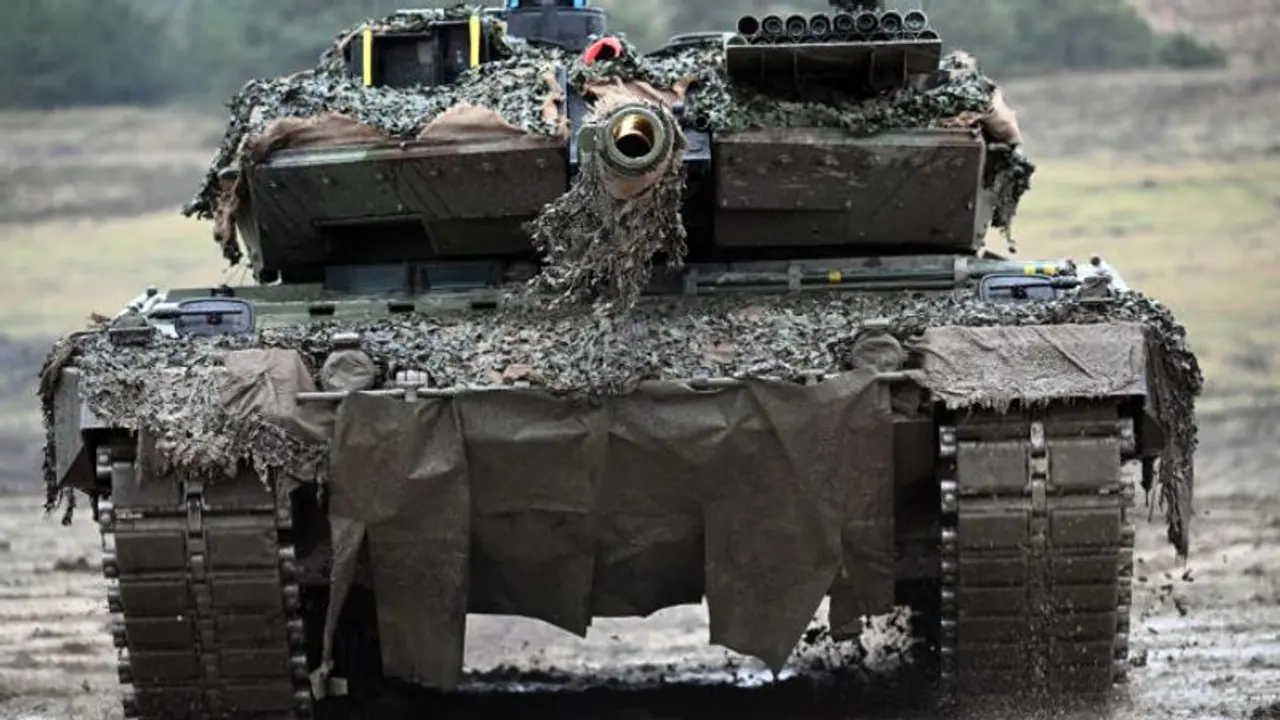Depleted uranium is highly dense, 1.7 times more than lead, which makes it suitable for making the tips of armour-piercing shells. Defence and Aerospace Analyst Girish Linganna reports
Within a few days of the British government's announcement that it would supply Ukraine with ammunition containing depleted uranium, Russian President Vladimir Putin declared his intention to place tactical nuclear weapons in Belarus, which shares a border with Ukraine. This announcement came on March 25, 2023.

According to a Reuters report, he spoke on state television and mentioned that the reason for talks with Belarus President Alexander Grigoryevich Lukashenko was triggered by the British Deputy Minister of Defence’s announcement of the UK’s intention to provide depleted uranium weapons to Ukraine.
The statement was related to nuclear technology. But, even without this context, Lukashenko has been persistent in raising the issue of Russian tactical nuclear weapons deployment on Belarusian territory. According to the Associated Press, the US government believes Kremlin possesses approximately 2,000 tactical nuclear weapons, which include different types of bombs, warheads and artillery rounds that can be carried by tactical aircraft, but Putin did not specify the number of nuclear weapons Russia would maintain in Belarus.
Annabel Goldie, the UK Minister of State for Defence, had disclosed on March 20 that some of the ammunition for the Challenger 2 battle tanks being provided to Ukraine by Britain contains depleted uranium armour-piercing rounds. Following this, the Russian President made the announcement.
What is Depleted Uranium?
Depleted uranium is a product of uranium enrichment and has the same chemical composition as natural uranium. However, the process removes most of the 235 isotope and leaves behind mainly the non-fissionable 238 isotope. Depleted uranium is highly dense, 1.7 times more than lead, which makes it suitable for making the tips of armour-piercing shells. Its ability to 'self-sharpen' upon impact sets depleted uranium apart from other heavy metals, as the material spreads out and burns off during the munition's penetration.
According to research, depleted uranium is both radioactive and toxic. While past studies have suggested that neither of these effects is an individually significant risk, some experts are still concerned that combining both could lead to harmful effects.
Alexandra Miller, a radiobiologist from the Armed Forces Radiobiology Research Institute, had earlier noted that no one has thoroughly examined the combined effects of DU. Therefore, it is possible that the combination of both could contribute to significant risk.
Where was depleted uranium used earlier?
In the 1991 Gulf war, it is estimated that the United States and United Kingdom used approximately 350 tons of depleted uranium to attack Iraqi tanks. Iraq has since seen a noticeable rise in cases of cancer and birth defects, leading to growing concerns that these health issues may be linked to the presence of depleted uranium contamination resulting from tank warfare that took place on agricultural land located west of Basra. It is believed that this contamination could be the cause of these health problems.
The Pentagon and the UK Ministry of Defence, however, have stated that there is no evidence to support this assertion. According to the American and British governments, depleted uranium is unlikely to cause any harm due to its low radioactivity as far as their current knowledge of radiobiology goes.
The possibility of being incorrect is a concern. Despite being 40 per cent less radioactive than natural uranium, Miller has doubts about the radiological and toxic effects of DU, which may unexpectedly interplay and cause greater carcinogenicity than previously assumed. This notion is debated among experts.
According to research, uranium has genotoxic properties, which means that it has the ability to modify DNA and activate genes that would not normally be active. This could potentially lead to abnormal cell activity and may increase the risk of tumour growth.
According to Mothersill, who was then the head of Radiation and Environment Science, Dublin Institute of Technology, Ireland, although the chemical risks associated with DU are well known, its radiological effects are not fully understood. In order to assess the danger of low-dose radiation, scientists rely on extrapolation from experiments using higher doses.
However, the correlation between radiation levels and their effects is not straightforward. Low levels of radiation may not kill as many cells, but this does not necessarily indicate a lower risk.
